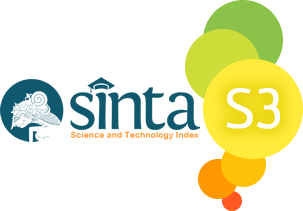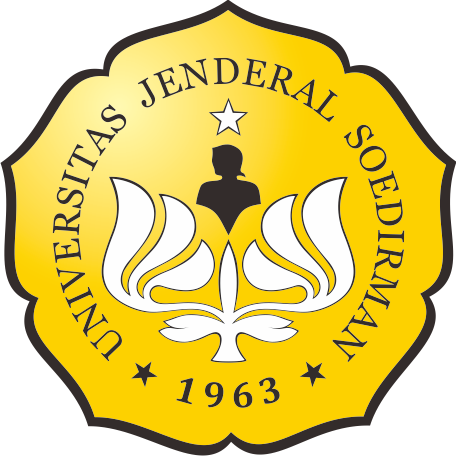KELIMPAHAN CHLOROPHYTA PADA MEDIA BUDIDAYA IKAN NILA YANG DIBERI PAKAN FERMENTASI DENGAN PENAMBAHAN TEPUNG KULIT UBI KAYU DAN PROBIOTIK
Abstract
Chlorophyta is autotroph organisms which has an important role in fresh waters as one of the largest algae division. This study aimed to determine the abundance and similarity structure of Chlorophyta in Tilapia culture media which was given fermented feed with the addition of cassava peel flour and MEP+ probiotic. This study used four treatments with four replications: (A) fermented feed without addition of cassava peel flour or 0% and MEP+ probiotic administration in media, (B) 25%, (C) 50% and (D) 75%. Sampling was carried out 6 times at intervals of 2 weeks. The main parameters were the number of Chlorophyta species and individuals,while supporting parameters were physical (temperature and TDS) and chemical (DO, BOD, pH, NO3, NO2 and total of PO4). The abundance of Chlorophyta data were analyzed descriptively and its similarity structure were analyzed using Cluster analysis. Then, continued with SIMPER analysis to determine the contribution of species to abundance similarity with PRIMER-E v.5 software. Analysis results showed that the abundance of Chlorophyta consists of 33 species with the average number of 10.412 individuals/liter. Cluster analysis results based on Bray-Curtis similarity index had a quite high similarity and it ranged between 57.79% -68.84%. SIMPER analysis results showed that the species which given highest contribution were Kircheneriella lunaris (31,03%), Selenastrum sp. (21,69%), and Gonatozygon monotaenium (12,96%).
Keywords
Full Text:
PDFReferences
American Public Health Association (APHA). 1992. Standard methods for the examination of water and waste water. 16th ed. Washington DC: American Public Health Association.
Boyd CE. 1988. Water quality in warmwater fish ponds. 4 th ed. Alabama: Anburn agricultured experiment station.
Brower JE, Jerold HZ, Car INVE. 1990. Field and laboratory methods for general ecology. 3rd ed. USA, New York: Wm C. Brown Publisher.
Budiardi T, Widyaya I, Wahjuningrum D. 2007. Hubungan komunitas fitoplankton dengan produktivitas udang vaname (Litopenaeus vannamei) di Tambak Biocrete. Jurnal Akuakultur Indonesia. 6(2): 119–125.
Busairi AM, Hersoelistyorini W. 2009. Pengkayaan protein kulit umbi ubi kayu melalui proses fermentasi: optimasi nutrien substrat menggunakan response surface methodology. Seminar Nasional Teknik Kimia Indonesia. ISBN 978-979-98300-1-2.
Chrismadha T, Ali F. 2007. Dinamika komunitas fitoplankton pada kolam sistem aliran tertutup berarus deras. Oseanologi dan Limnologi di Indonesia. 33: 325-338.
Dhahiyat Y, Evantara D, Resmiati T. 2003. Hubungan kandungan klorofil a dengan struktural komunitas fitoplankton di sekitar karamba jaring apung Waduk Ir. H. Juanda, Jatiluhur, Purwakarta. Jurnal Bioetika. 2(2): 44-45.
Effendi H. 2003. Telaah kualitas air bagi pengelolaan sumber daya dan lingkungan perairan. Yogyakarta: Kanisius.
Hadioetomo RS. 1993. Mikrobiologi dasar dalam praktek: teknik dan prosedur dasar laboratorium. Jakarta: PT Gramedia. 443h.
Kementerian Lingkungan Hidup (KLH). 2002. Himpunan peraturan dan perundang- undangan di bidang pengelolaan lingkungan hidup dan pengendalian lingkungan, Era Otada.
Lee RE. 2008. Phycology. 4th ed. USA: Cambridge University Press. https://doi.org/10.1017/CBO9780511812897
Makatipu PC, Peristiwady T, Leuna M. 2010. Biodiversitas ikan target di terumbu karang taman nasional Bunaken, Sulawesi Utara. Oseanologi dan Limnologi di Indonesia. 36(3): 309-328.
Mansyur A, Tangko AM. 2008. Probiotik: pemanfaatannya untuk pakan ikan berkualitas rendah. Jur.RisetAkuakultur. III(2): 145-149. https://doi.org/10.15578/ma.3.2.2008.145-149
Mirwandhono E, Bachari I, Situmorang D. 2006. Uji nilai nutrisi kulit ubi kayu yang difermentasi dengan Aspergillus niger. Jurnal Agribisnis Perternakan. 2(3): 91-95.
Muhiddin NH, Juli N, Aryantha INP. 2001. Peningkatan kandungan protein kulit umbi ubi kayu melalui proses fermentasi. JMS. 6(1): 1-12.
Nuraini. 2008. Penggunaan ransum yang mengandung produk kulit umbi ubi kayu fermentasi dengan Penicillium sp. dan pengaruhnya terhadap pertumbuhan broiler. Jurnal Agribisnis Peternakan. 4(2): 47-50.
Pescod M B. 1973. Investigation of rational effluent and stream standard for tropical countries. Bangkok: Asian Institute of Technology.
Prihartini NB, Dian H, Yuni A. 2005. Cyanobacteria dan chlorophyta di Situ Kenangfa dan Situ Agathis Universitas Indonesia Depok. Sains Indonesia. 10(3): 28-36.
Rianto. 2008. Biodiversitas cyanobacteria dari beberapa situ/danau di kawasan Jakarta-Depok-Bogor, Indonesia. Makara Sains. 12(1): 44-54.
Rahayu SYS, Widiyati A, Hotimah L. 2007. Kelimpahan dan keanekaragaman jenis plankton secara stratifikasi di perairan karamba jaring apung, Waduk Cirata. Ekologia. 7(2): 9-18.
Sachlan M. 1982. Planktonologi. Correspondence Course Centre. Jakarta: Direktorat Jenderal Perikanan.
Shirota A. 1966. The plankton of South Vietnam. Tokyo: Technical Cooperation Agency.
Standar Nasional Indonesia (SNI). 2004. Air dan air limbah. Jakarta: Badan Standarisasi Nasional (BSN).
Supriyati. 2003. Onggok terfermentasi dan pemanfaatannya dalam ransum ayam ras pedaging. JITV. 8(3): 146-150.
Sze P. 1993. A biology of the algae. London: WMC Brown Publishers.
Thompson RH. 1966. Algae. In: Edmonson WT. Freshwater biology. 2nd ed. Seattle: University of Washington. p 115-170.
Welch PS. 1952. Limnological methods. New York: McGraw Hill Book Company Inc.
Wetzel RG. 2001. Limnology: lake and river ecosystems. 3rd ed. California: Academic Press.
Widyastuti, E., Sukanto, S. Rukayah. 2010. Penggunaan pakan fermentasi pada budidaya ikan sistem keramba jaring apung untuk mengurangi potensi eutrofikasi di Waduk Wadaslintang. Limnotek. 17(2): 191-200.
Winarlin, Widiyati A, Kusdiarti, Nuryadi. 2010. Pemanfaatan limbah budidaya akuaponik untuk produksi pakan alami (Moina sp.). Prosiding Forum Inovasi Teknologi Akuakultur. hal.675-680.
Article Reads
Total: 5449 Abstract: 2765 PDF: 2684Refbacks
- There are currently no refbacks.

This work is licensed under a Creative Commons Attribution-ShareAlike 4.0 International License.
This website is maintained by:
Bio Publisher
The Faculty of Biology Publishing
Faculty of Biology
Universitas Jenderal Soedirman
Jalan dr. Suparno 63 Grendeng
Purwokerto 53122
Telephone: +62-281-625865
Email: biologi@unsoed.ac.id
T his website uses:
OJS | Open Journal System
A free journal management and publishing system that has been developed by the PKP (Public Knowledge Project) version 2.4.8.0.
All article content metadata are registered to:
Crossref
An official nonprofit Registration Agency of the International Digital Object Identifier (DOI) Foundation.
Articles in this journal are indexed by:









